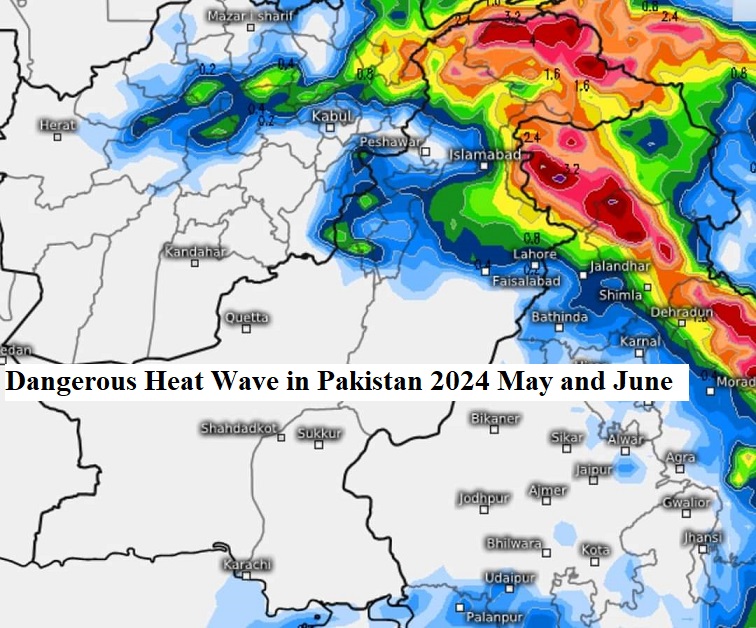Pakistan is currently experiencing a severe heat wave that has affected 26 districts across Punjab, Sindh, and Balochistan since May 21, 2024. The climate change ministry has warned that this initial wave will last until May 30, followed by two more separate heatwaves in June. The ongoing heatwave has been attributed to unsustainable environmental practices and deforestation, which are exacerbating the effects of global warming. The heatwave has been characterized by temperatures 5 to 6 degrees Celsius above normal across most regions, with some areas reaching as high as 46 degrees Celsius. The Pakistan Meteorological Department has forecasted that the heatwave conditions will persist in three waves throughout the summer, with the second wave expected from June 7-8 and the third wave during the last week of June.
Impact of Heatstroke
The heatwave has significant implications for public health, particularly for vulnerable groups such as children, the elderly, and those with serious health conditions. The National Disaster Management Authority (NDMA) has been working on early warnings and coordinating with provincial departments to manage natural disasters and calamities. Public awareness campaigns are ongoing to educate people on the health risks and preventive measures.
Summer Break is Starting in Pakistan for School Going Children’s
The heatwave has also accelerated glacier melt and increased the risk of forest fires, with the NDMA advising the public to exercise caution in national parks and avoid discarding flammable materials. In response to the heatwave, the Punjab Education Department has announced an early summer break, shutting down schools for half of Pakistan’s student population, totaling 26 million, for a week. This measure aims to mitigate the impact of the extreme temperatures on students’ health and learning abilities.
Worse Climate Change in Pakistan
Pakistan ranks as the fifth most vulnerable country to climate change, with the NDMA having developed a disaster calendar projecting natural calamities for the next six months. The government has established a high-level committee to coordinate efforts across relevant authorities and keep the national forum updated on climate-related challenges. The Prime Minister’s aide on climate change has emphasized the importance of comprehensive guidelines and early warnings to prevent heatwave-related casualties.
How Long is the Heat Wave Expected to Last in Pakistan
The heat wave in Pakistan is expected to last for several weeks, with three separate heat wave spells forecasted for May and June. Temperatures are anticipated to further escalate up to 45 degrees Celsius in June, with a third heatwave spell expected in the initial ten days of the month, which could last for 3 to 5 days. The Pakistan Meteorological Department has predicted heat wave conditions until May 27 in most of the country, with parts of Punjab and Sindh provinces slated to experience extreme heat.
The Highest Temperature Recorded During the Heat Wave in Pakistan
The highest temperature recorded during the current heat wave in Pakistan in May 2024 is 50°C (122°F) in Mohenjo Daro and Dadu, Sindh province. This matches the record high temperature for the month of May in Pakistan. The previous record high temperature in Pakistan was 53.5°C (128.3°F) recorded in Mohenjo-daro on May 26, 2010, which was the hottest temperature ever recorded in Asia and the fourth highest globally. In the same heat wave in 2010, Larkana reached 53°C (127°F), the second hottest temperature ever recorded in Asia. The heat wave has affected 26 districts across Punjab, Sindh and Balochistan provinces since May 21, 2024. Pakistan Meteorological Department has forecasted three separate heat wave spells in May and June, with the highest temperatures expected in early June.
The Most Affected Areas in Pakistan during the Heat Wave
Bahawalpur, Rahim Yar Khan, Dera Ghazi Khan and Multan districts in southern Punjab province. These districts are expected to experience severe heat wave conditions from May 21 to May 27, with temperatures reaching up to 46°C. Larkana, Sindh, where temperatures hit 51°C (124°F) on May 20, 2024. In 2010, Larkana recorded the second-highest temperature ever in Asia at 53°C (127°F). Sukkur, Sindh, where temperatures reached 47°C (117°F) during the heat wave.














+ There are no comments
Add yours